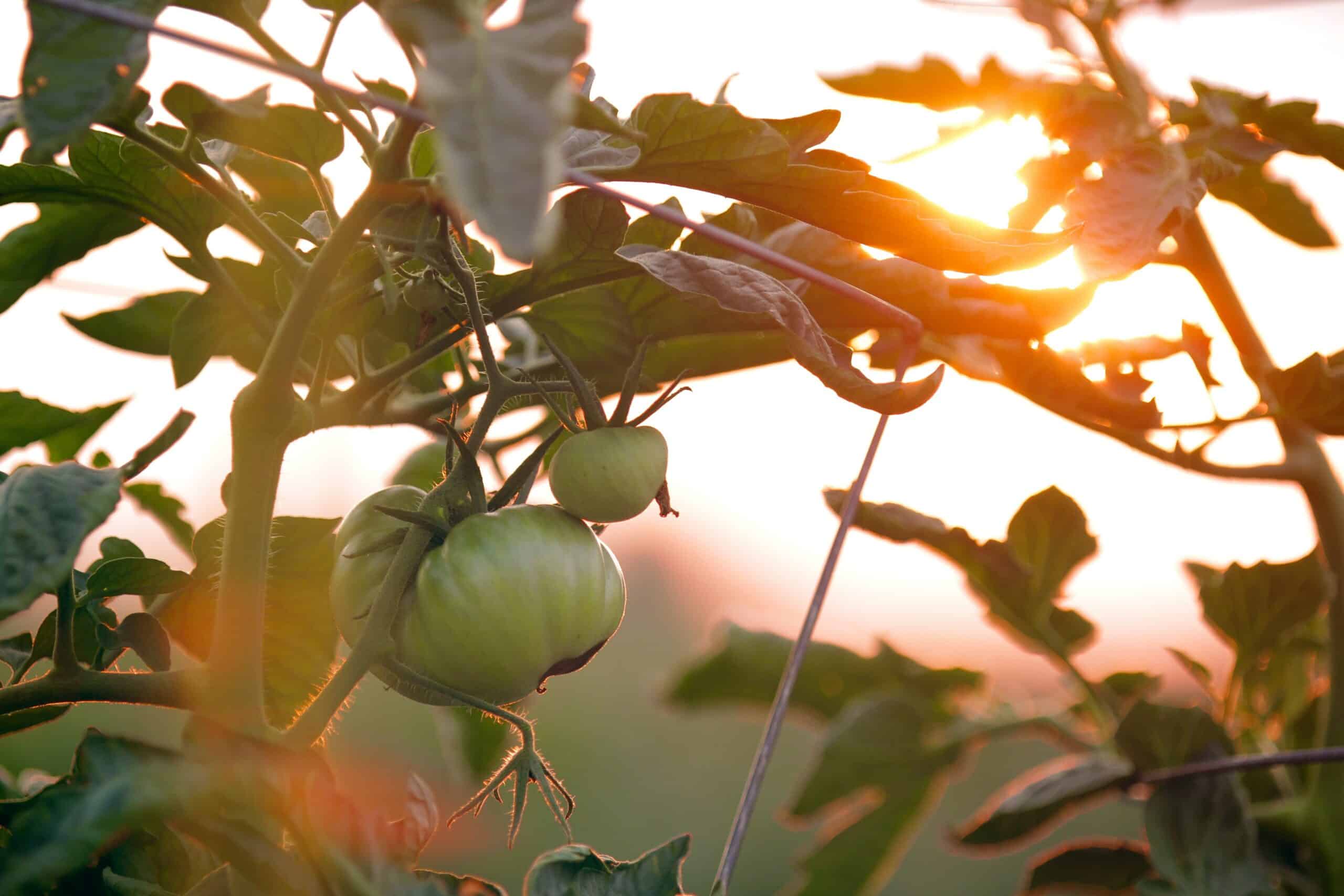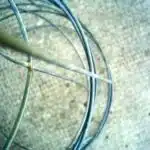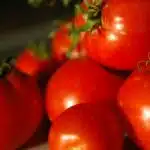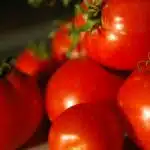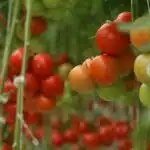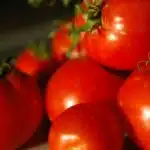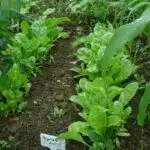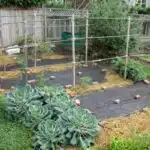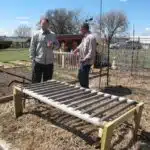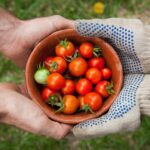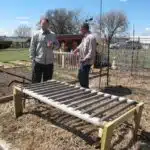Do you have a green thumb but limited space? Growing tomatoes in pots is the perfect way to satisfy your passion for gardening while preserving precious real estate. With just a few simple tips, you can make sure your tomato plants thrive in their containers and provide you with an abundant harvest of delicious, juicy tomatoes.
Rhetorical literary device: In this article, we’ll explore the “how-tos” of planting tomatoes in pots—from choosing the right pot to harvesting your crop—so that you can reap the rewards without having to rent a farm!
Growing tomatoes in pots is not only easy, it’s also incredibly satisfying. The taste of a fresh home-grown tomato beats store bought every time! And since vegetables grown in containers are generally healthier than those grown commercially, you can rest assured knowing that your family is getting the best produce possible. Plus, if done correctly, your plants will require minimal maintenance and attention throughout the growing season.
Whether you’re a novice gardener or an experienced grower looking for new ways to expand your garden, these five tips for growing tomatoes in pots are sure to get you started on the path to success!
Choosing A Pot For Growing Tomatoes
A flourishing garden is a sight to behold. Bursting with life and colour, the tomatoes ripening in the sun are a sight for sore eyes. When you don’t have a backyard, you’ll need to resort to growing them in pots, but it doesn’t mean your garden won’t be any less stunning! Here’s how to choose a pot for growing tomatoes.
First things first – size matters! Make sure the pot is big enough for the type of tomato you’re growing, as well as having adequate drainage holes at the bottom. A wide and deep pot is best for root growth and will help ensure your tomatoes get enough water and fertilizer all season long. For smaller varieties, five gallons should be enough; larger varieties will require at least ten.
When it comes to material, look out for something that won’t retain too much heat or moisture in order to prevent rot or disease from developing. Terra cotta and resin are both good options that come in various shapes and sizes. Keep in mind that terra cotta can be heavy when filled with soil and water, so if you’re looking for something lighter, go with resin instead! With these tips in mind, you’ll be able to find the perfect pot for your precious tomatoes.
Preparing Soil For Growing Tomatoes In Pots
So, what do you need to consider when preparing soil for growing tomatoes in pots? To give your tomatoes the best chance of success, here are some key tips to follow.
Firstly, prepare a potting mix that is specifically designed for tomatoes. It should be light and airy, with plenty of organic matter such as compost or peat moss, to help it retain moisture and provide nutrients to the plants. A good quality commercial potting mix is ideal.
Secondly, add fertilizer to the soil when planting. This will ensure that your tomato plants have enough nutrients throughout their growing season. Choose a balanced fertilizer with equal parts nitrogen, phosphorus and potassium; this will help promote healthy foliage and fruit production. Some gardeners also like to use slow-release fertilizers for tomatoes grown in containers.
Finally, make sure the soil pH level is between 6 and 7 for best results. Tomatoes perform well in slightly acidic soils, so adding some sulfur can help lower the pH if needed. You can use a soil testing kit from your local nursery or garden center to determine the pH level of your soil before planting.
These tips will get you on your way towards growing delicious tomatoes in pots – now all that’s left is planting!
Planting Tomatoes In Pots
When it comes to planting tomatoes in pots, there are several important steps you need to take. First, choose a pot that is large enough for the tomato plant; the larger the pot, the better. Make sure it has drainage holes at the bottom so that excess moisture can escape. In addition, it’s best to use soil specifically designed for containers or a combination of potting mix and compost or manure.
In order to give your tomato plants the best chance of thriving, here are a few tips: • Fill your pot with potting mix up to about an inch from the top. • Before planting your seedling, dig a hole slightly larger than its root ball and place it in the center of the pot. • Once planted, water thoroughly until water begins dripping out of the drainage holes.
With a little bit of extra effort, your tomato plants will thrive in their pots! To ensure healthy growth and development for your tomato plants, there are some important watering requirements you must follow closely. Water regularly but make sure not to overwater as this can cause root rot and other problems. Additionally, when temperatures get hot during summer months, you may need to water more frequently – especially if your pots are in direct sunlight all day long.
Watering Requirements For Tomato Plants In Pots
Planting tomatoes in containers is a great way to enjoy the delicious fruits of summer without having to dedicate a large garden plot. However, understanding the proper watering needs for these plants is essential for their growth and development. With that in mind, let’s take a look at how best to meet the watering requirements of tomato plants in pots.
As any gardener knows, water is essential for healthy plant growth. But what’s more important for tomato plants in containers are consistent and regular watering — rather than simply pouring on a lot of water all at once. Since potted soil can dry out much faster than soil in the ground, tomatoes grown in pots need to be watered more frequently — usually every other day or so — depending on the size of your container and its location. Aim to keep soil lightly moist throughout the season, but never soggy or wet.
To help gauge whether it’s time to water, stick your finger into the soil up to your knuckle — if it feels dry when you pull it out, then it’s time to give your tomato plants some water. Additionally, mulching with straw or hay can help conserve moisture and reduce weeds that compete with your tomatoes for nutrients and moisture from the soil.
By following these steps and understanding how best to meet their watering needs, you can ensure that your tomato plants receive enough and not too much water for optimal growth and health this season!
Staking And Supporting Tomato Plants In Containers
Staking and supporting tomato plants in containers is an important step in providing these plants with the best growing conditions. It’s essential to ensure your tomatoes have the right amount of support and stability to help them thrive. To accomplish this, there are a few key steps to follow:
• Identifying the Right Support System: Choosing the right type of staking or trellising system will depend mostly on what type of tomatoes you’re growing and how much space you have for them. If you’re dealing with determinate varieties, cages may be a good option. On the other hand, if you’re growing indeterminate varieties, taller stakes or trellises might be more appropriate.
• Providing Adequate Support: Once you’ve identified the best support system for your tomatoes, it’s important to provide them with enough support. Make sure your cages are sturdy enough to bear the weight of your plants as they grow bigger and heavier. You can also tie up any stems that need extra support so they don’t break during strong winds or heavy rainstorms.
• Pruning Regularly: Pruning regularly throughout the season helps keep your tomato plants healthy by encouraging new growth and improving air circulation. Removing any dead leaves or branches will also help direct energy towards producing larger amounts of fruit instead of foliage production.
These three steps will help ensure your tomato plants get adequate support so they can reach their full potential! By creating a strong foundation for your tomato plants, you’ll be able to enjoy plenty of juicy fruits all season long! Now that we’ve established a strong base for our tomato plants, let’s explore some tips for fertilizing these container-grown veggies.
Fertilizing Tomato Plants Growing In Containers
What a coincidence! Just when we were discussing the techniques for growing tomatoes in containers, we come across the next step – fertilizing tomato plants. It’s no secret that tomatoes love their fertilizer – it helps them grow big, juicy fruits.
Fertilizing your tomato plants is key to producing a healthy and bountiful harvest. Tomatoes are heavy feeders, so you’ll want to give them plenty of nutrients throughout the growing season. Choose a fertilizer that’s high in nitrogen and low in phosphorus, such as fish emulsion or a slow-release organic fertilizer. To get the most out of your fertilizer application, be sure to water your container tomato plants before and after applying it.
Now that we’ve discussed fertilizing, let’s talk about controlling pests and diseases in container-grown tomatoes. Pests and diseases can quickly ruin our precious crop if left untreated, so it’s important to stay vigilant when caring for our tomatoes.
Controlling Pests And Diseases In Container-Grown Tomatoes
The fight against pests and disease is a constant battle for tomato growers, regardless of the growing method. But when it comes to tomatoes in containers, there’s an extra layer of vigilance needed. To get ahead of the game, it’s important to understand the signs and take preventative measures to control pests and diseases before they have a chance to take hold. Let’s dig in and explore this critical step.
Just like with any plant, tomato plants grown in containers are vulnerable to pest infestations that can cause damage or even destroy the crop if left unchecked. Common culprits include aphids, stink bugs, whiteflies, caterpillars, and spider mites. In addition to physical damage from these pests, they can also spread disease among plants by transmitting fungal spores or other pathogens. The key is to spot them early and take action swiftly – prevention is worth a pound of cure!
Fortunately, there are many effective ways you can protect your container-grown tomatoes from pests and diseases while still being kind to the environment. Start by scouting your plants regularly for signs of trouble; inspect both the leaves and stems for signs of insect activity or disease symptoms such as spotting or wilting leaves. If you find anything suspicious, remove affected leaves and treat with organic pesticides or homemade remedies like soap sprays or garlic oil mixtures – just be sure to follow package directions for safety’s sake! Taking these precautions will help ensure that your tomatoes stay healthy and productive until harvest time.
Pruning Tomato Plants In Containers
Gardening in containers can present some unique challenges, but also offers its own rewards. Pruning your tomato plants is one way to maximize the success of your container-grown, tomato crop. There are several simple steps you can take that will help ensure the best results.
First, prune away any suckers that form between the main stem and the branches. This will prevent overcrowding and promote fuller growth on each branch. It also helps with air circulation and light penetration, which is essential for healthy fruits. Additionally, pruning away lower leaves helps keep diseases at bay by making it harder for pests to hide and spread disease spores.
Second, removing blossoms early helps direct energy towards healthy fruit production instead of flowering. This increases yields and improves the quality of tomatoes produced from each plant. Finally, pinch off any stems or leaves that appear unhealthy to stop disease from spreading throughout the plant and to other plants in the same area.
By following these simple steps for pruning tomato plants in containers, you can increase your chances of a successful harvest come summertime. With careful maintenance and attention to these details, you’ll be able to enjoy a bountiful tomato crop all season long!
Harvesting Tomatoes From Containers
Harvesting tomatoes from containers can be an exciting prospect for any gardener. After all the hard work of selecting a variety, providing proper nutrition and light, and pruning the plants, it’s time to reap the rewards! But when is it time to harvest? It depends on the type of tomato you’re growing. For most varieties, it’s best to wait until the tomatoes have reached their full size and are a rich red in color.
Before harvesting your tomatoes, take a few moments to inspect each one. Make sure there are no signs of damage or disease such as spots or discoloration. Also check for any early signs of rotting or moldy patches. If you find any imperfections, it’s best to discard them immediately to prevent disease from spreading to other tomatoes in your container garden.
When it comes time to finally pick those juicy fruits off the vine, do so gently but firmly. This will help ensure that they don’t become bruised or damaged during harvesting. Don’t forget to savor the moment – you’ve worked hard for this reward! With these tips in mind, you’ll be able to enjoy delicious homegrown tomatoes from your container garden with minimal effort and maximum satisfaction!
Now that you know how to properly harvest tomatoes from containers, understanding the limitations of growing them in limited spaces is important too. Knowing what challenges may arise and how best to address them can help make sure your tomato-growing experience is successful every time!
Understanding The Limitations Of Growing Tomatoes In Containers
Did you know that up to 76% of Americans grow their own fruits and vegetables? Growing tomatoes in containers is becoming increasingly popular due to its convenience and benefits. Understanding the limitations of growing tomatoes in containers is essential for success.
When it comes to growing tomatoes in pots, there are some important considerations. Firstly, the size of the pot matters – it needs to be large enough for a tomato plant to thrive, with plenty of soil for root growth. Secondly, since potting mixes can dry out quickly, extra watering may be necessary during hot and dry weather. Additionally, nutrient deficiencies can occur more easily in containers than when planted directly into the ground; regular fertilization may be needed.
Finally, tomatoes grown in containers will usually yield less fruit than those planted in garden beds or raised beds. This is because container-grown plants have limited access to nutrients, water and space compared to those that are planted directly into the soil. However, by understanding these limitations and taking steps such as using larger pots or applying liquid fertilizer regularly, it is possible to achieve good results with tomato plants grown in pots.
By taking these factors into account and making smart choices about the variety of tomato chosen for container gardening, it’s possible to enjoy a bountiful harvest of delicious homegrown tomatoes!
Growing Dwarf And Patio Tomato Varieties In Containers
Gardening enthusiasts often enjoy experimenting with growing tomatoes in containers. Coincidentally, this provides the perfect opportunity to try out different varieties of tomatoes that are best suited for container gardening. Here are three great options for growing dwarf and patio tomato varieties in containers:
- Early Girl tomatoes, which mature earlier than other types of tomatoes;
- Patio Hybrid tomatoes, which have a compact growth habit; and
- Dwarf Champion tomatoes, which produce an abundance of small-sized fruit.
These types of tomatoes are ideal for container gardening because they’re smaller than other tomato varieties, yet still produce a decent yield. Plus, they require less space than larger tomato plants. You won’t have to worry about overcrowding or staking since these plants stay relatively low and bush-like. The key is to choose the right pot size so your tomato plants can get plenty of sunlight while having enough room to thrive.
With just a few extra steps and considerations, you can successfully grow these kinds of tomatoes in containers. Providing your plants with adequate moisture and nutrients will ensure that they produce delicious fruits throughout the season. Now that you know what it takes to grow dwarf and patio tomato varieties in containers, let’s move on to exploring how to grow heirloom tomato varieties in containers!
Growing Heirloom Tomato Varieties In Containers
Growing tomatoes in containers can be a challenging endeavor, but it can also be incredibly rewarding. For those who want to try something a bit different, growing heirloom tomato varieties in containers is an excellent option to consider. Not only are heirloom varieties unique and flavorful, but they are also well-suited for container gardening.
When it comes to choosing the right variety of heirloom tomato for container gardening, there are several factors to consider. First, look for types that have been specifically bred for container gardening, as these will typically have smaller fruits and require less space. Additionally, look for plants that do not grow too tall or wide; this will make them easier to manage and allow them to flourish in confined spaces. Finally, it’s important to select varieties that are disease-resistant and drought-tolerant; otherwise, they may struggle in the container environment.
With the right variety of heirloom tomato chosen, there are still some additional tips to keep in mind when growing tomatoes in containers. Regular watering is important; plan on giving your plants one inch of water per week during the growing season. Additionally, fertilizing your plants every four weeks can help ensure they remain healthy and vigorous throughout the season. Lastly, pruning off any dead or damaged branches can help encourage new growth and prevent disease.
TIP: When selecting heirloom tomato varieties for your container garden, pay special attention to their size requirements as well as their resistance to disease and drought tolerance – these factors will play an important role in how successful your plants grow!
Troubleshooting Common Issues With Growing Tomatoes In Pots
Growing tomatoes in pots can be a rewarding experience, but it does come with some challenges. With the right knowledge and troubleshooting advice, however, you could be on your way to a plentiful harvest! Let’s explore how to resolve common issues when growing tomatoes in pots.
To start, let’s take a look at one rhetorical device that can help engage the audience: anaphora. Anaphora is the repetition of words or phrases at the beginning of successive clauses or sentences. When combined with vivid imagery and careful word choice, anaphora can create impactful and memorable writing. For example, “Tomatoes in containers need sun and water and care…sun and water and care…”
It’s important to be aware of potential problems when growing tomatoes in pots, such as inadequate sunlight exposure or inadequate soil drainage. To address these issues, provide your plants with plenty of direct sunlight (especially during the peak hours of 11am-3pm), as well as ample water without over-watering them. Additionally, make sure your container has sufficient drainage holes to prevent root rot from occurring due to overwatering.
Taking these proactive steps should help protect your tomato plants from common issues while growing in pots. Now that we’ve explored how to troubleshoot problems when growing tomatoes in containers, let’s move on to the next section about protecting tomato plants from cold weather…
Protecting Tomato Plants In Containers In Cold Weather
Protecting tomato plants in containers in cold weather is an important part of successfully growing tomatoes in pots. While it may seem challenging to protect the plants, with a few extra steps you can ensure your tomatoes thrive. Here are four tips for protecting tomato plants from cold weather:
Cover the container – If temperatures drop below 50 degrees Fahrenheit, cover the pot with a floating row cover or plastic tarp. The fabric should be draped over the top of the container and tucked under the bottom. This will help insulate and protect your tomato plant from any sudden drops in temperature.
Move indoors – If you have space indoors, move the container inside when temperatures fall too low for tomatoes to survive outdoors. Place it near a window or skylight to ensure that your tomato plant gets enough light while it’s indoors.
Mulch around the base – Mulching around your tomato pot can help regulate soil temperature and serve as an extra layer of insulation against cold weather. Use straw, hay, or other organic matter as mulch to help keep your tomato plant warm when temperatures drop too low outside.
Monitor overnight temperatures – It’s important to keep an eye on overnight temperatures if they dip below 50 degrees Fahrenheit. Make sure you take measures such as covering or moving your containers indoors before nightfall if necessary. With careful monitoring, you can make sure your plants stay safe during periods of cold weather.
By following these simple steps, you can protect your tomato plants from cold weather and ensure that they continue to thrive during colder months of the year. From there, it’s time to turn our attention towards choosing the right varieties for growing in pots — so let’s dive into that next!
Choosing The Right Tomato Varieties For Growing In Pots
Choosing the right tomato varieties for growing in pots is absolutely critical. It’s not enough just to pick a few tomatoes and hope they’ll do well; you need to make sure that the variety you choose is best suited to the potting environment. This is where exaggeration comes into play – it’s not just any old tomato variety, it’s THE perfect one!
The importance of selecting the ideal tomato variety for your container garden can’t be overstated. Picking the wrong type of plant could render all your hard work useless and leave you with an underwhelming harvest – or worse, no harvest at all. So what should you look for when choosing a tomato variety? Consider factors such as how well it will tolerate hot and cold temperatures, how much sunlight it needs, how much water and fertilizer it needs, and importantly its size – some tomatoes may be too large for small pots.
With so many considerations to take into account, finding the right tomato varieties can seem daunting. However, taking the time to research different varieties will help ensure that you get a bumper crop come harvest time. With careful selection and attentive care, your containers can yield delicious tomatoes that will have family and friends drooling!
Frequently Asked Questions
How Often Should I Water Tomato Plants In Pots?
Like a thirsty traveler in the desert, your tomato plants need regular watering to survive. But how often should you water them in pots? A figure of speech: “Watering your tomatoes is like giving them a sip of life.”
When it comes to watering tomatoes in pots, the golden rule is to give them a deep drink once or twice a week. The frequency will depend on several factors such as the size of the pot, location, and time of year. In summer months, when temperatures are higher and evaporation rates are higher, you’ll likely need to water more frequently than during cooler months.
To make sure your tomato plants get enough moisture without overwatering them, check the soil moisture level before watering by sticking your finger into the soil up to your knuckle. If it feels dry, it’s time for some water. When you do water, do so slowly and evenly so that enough moisture reaches around the root system and into all parts of the pot.
Watering your tomatoes correctly will ensure they get all the hydration they need to thrive!
What Is The Best Fertilizer To Use For Tomato Plants In Pots?
Growing tomatoes in pots is a great way to get fresh produce for your home kitchen. Not only does it provide you with delicious fruits, but the process of planting and caring for the plants can be a rewarding experience. However, it is important to make sure that you are using the right fertilizer so that your tomato plants can thrive.
When it comes to choosing the best fertilizer for tomato plants in pots, there are a few things that you should consider. First, look at the nutrient content of the fertilizer and make sure that it has enough of the essential nutrients like nitrogen and potassium. You should also consider how often you plan on fertilizing your plants—if you want them to get an extra boost of growth, then a liquid fertilizer may be a better choice than one with slow-release granules.
Finally, if you want to take care of your tomato plants in pots in an eco-friendly way, then look for organic or natural fertilizers. These will provide your plants with all the necessary nutrients without introducing any synthetic chemicals into your soil. With these tips in mind, you’ll be able to find the perfect fertilizer for growing tomatoes in containers!
How Do I Know When My Tomatoes Are Ready To Be Harvested?
It’s a great feeling to be able to grow your own tomatoes in pots. But what can be even more satisfying is knowing when those tomatoes are ready to be harvested! Luckily, there are some easy-to-follow guidelines for harvesting tomatoes.
First, the color of the tomato is an indicator of its ripeness. Tomatoes that have gone from green to yellow or orange are typically ready for picking. The skin should also feel slightly soft and tender when you press it with your finger. If you’re unsure about whether the tomato is ready to pick, then you can always try cutting into it and tasting a bit of the flesh – if it tastes sweet and juicy, then it’s probably ready!
Another way to tell if your tomatoes are ripe is by the amount of liquid they produce when you cut them open. You should see a lot of juice coming out when you slice into a ripe tomato – this means that all that hard work has paid off and now you can enjoy your delicious home-grown tomatoes!
What Is The Best Way To Protect Tomato Plants In Containers In Cold Weather?
A cold winter can quickly put an end to the hard work of growing tomatoes in pots. But it doesn’t have to be a death sentence for your tomato plants! If you want to ensure that they make it through the cold season unscathed, then the best way to protect them is by using special containers and covering them with frost-proof fabric.
Let’s take a look at how we can utilize these techniques to keep our precious tomatoes safe from the elements:
- Invest in frost-proof containers – These are specially designed containers with insulation built-in, which helps keep the temperature in the pot more stable and prevent it from dropping too low.
- Cover the plants with a frost-proof fabric – This will provide additional protection against extreme weather conditions like snow, ice, and wind chill.
- Place the pots near a heat source – Positioning your tomato plants near a heat source such as a patio heater or warm wall will help prevent temperatures from getting too low and damaging your plants.
When it comes to keeping your beloved tomato plants safe during cold weather, these three steps are essential. Not only will it help prevent damage caused by freezing temperatures, but also promote healthier growth throughout their growing season. So don’t wait until winter arrives; get ahead of the curve and start preparing now! You’ll be glad you did when you come out of hibernation next spring with thriving tomato plants!
Are There Certain Varieties Of Tomatoes That Are Best Suited For Growing In Pots?
Growing tomatoes in pots can be a great way to get the same delicious produce of a large garden, but with less work and space. But before you get started, it’s important to know that there are certain varieties of tomatoes that are better suited for growing in containers than others.
The main factor to consider when choosing tomato varieties for container gardening is their size. Smaller varieties such as cherry, grape, or Roma tomatoes tend to do well in small spaces since they don’t require as much soil volume for root growth. Additionally, these smaller varieties usually have fewer problems with pests and disease due to the fact that they require less water and fertilizer than larger varieties.
When selecting tomato varieties for container gardening, it’s also important to keep in mind the flavor profile you’re looking for. Many people prefer smaller-sized tomatoes because they tend to be sweeter than larger ones. While some might enjoy the tangy flavor of a larger heirloom variety, if you’re looking for sweet or mild flavors then keeping your plants small will ensure that your tomatoes are flavorful and juicy.
Whatever variety you choose, following some simple tips such as watering frequently, using a high quality potting mix, providing plenty of sunlight, and using cages or stakes for support will help ensure success with your tomato container garden. With the right variety and care, you’ll soon be enjoying fresh tomatoes from your own backyard!
Conclusion
The conclusion of this article is that growing tomatoes in pots can be an incredibly rewarding experience. Not only are the plants relatively easy to care for, but you can also enjoy the fruits of your labor in the form of delicious homegrown tomatoes. With a bit of patience and effort, anyone can become a successful tomato gardener.
The best part about growing tomatoes in pots is that you get to share your success with friends and family. Once your tomatoes are ripe and ready for harvest, you can proudly show off your bounty. It’s also a great way to teach children about gardening and how their efforts can result in something delicious!
Finally, if you’re looking for an easy way to add some flavor to your culinary creations, why not give growing tomatoes in pots a try? With the right techniques and knowledge, you’ll soon be reaping the rewards of homegrown tomatoes that taste even better than store-bought varieties!

